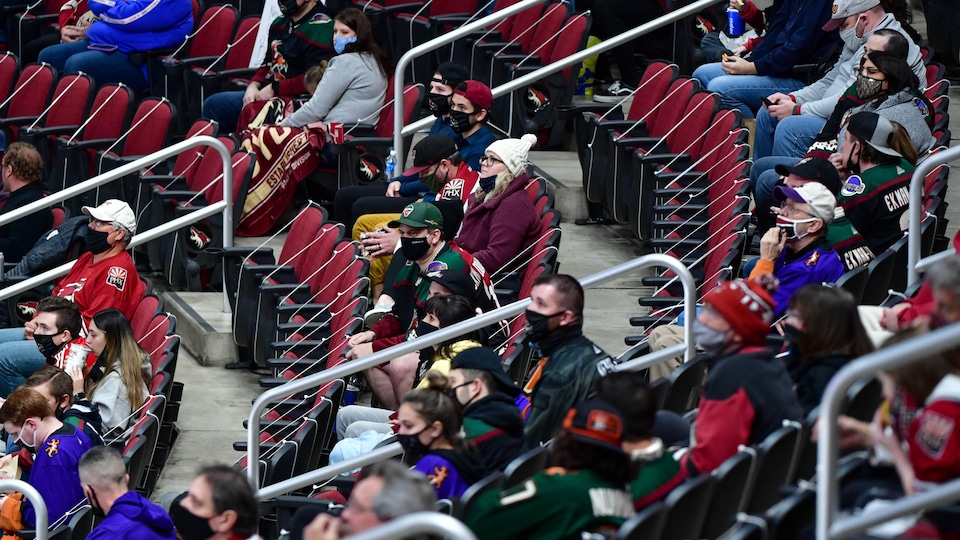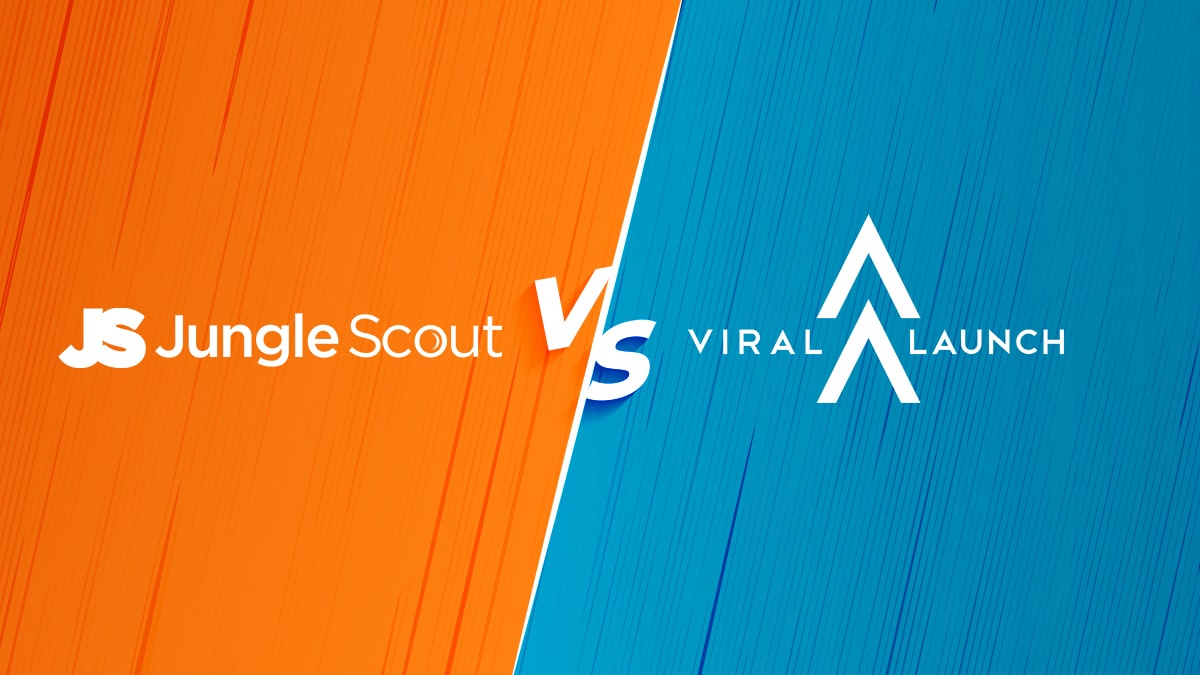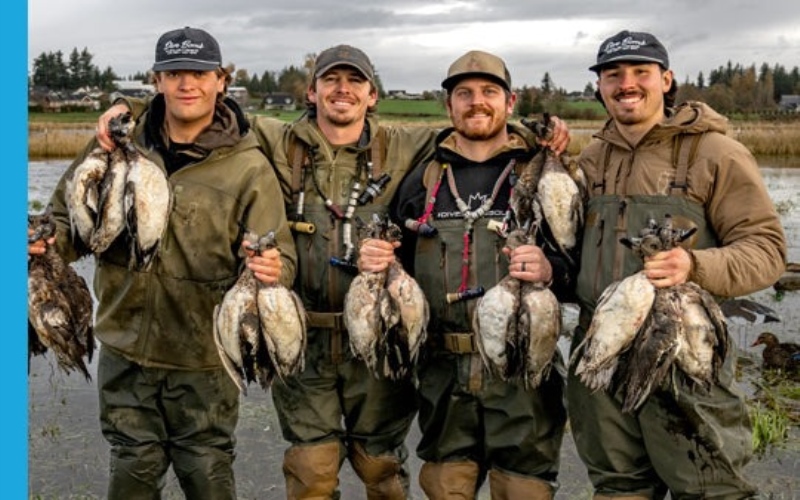When will fans return to NHL games in Canada? | You have seen?
In the NBA, 27 organizations have chosen to open the doors of their amphitheater to the public. All 31 major baseball teams welcome fans to stadiums.
In hockey, the Washington Capitals will become the 23rd NHL team on April 27 to allow spectator access. Up to 2,100 people will be invited to see their team at work. The Chicago Blackhawks are the only American team on the Bettman Tour not to have announced a comeback so far.
All of these formations are based in the United States, considering the particular situation of the Raptors and Blue Jays. Torontonians went into exile this season in Florida to avoid increasing extra-border travel.
Meanwhile, Canada’s NHL teams are content to look at the situation cautiously.
In March, the Canadian vice-president of public affairs and communications, Paul Wilson, wrote to Radio-Canada Sports: Our teams have been working for several weeks already to secure our rooms for an upcoming reopening.
He thus reacted to the announcement of the Government of Quebec allowing the opening of theaters to a maximum of 250 people.
So that was before the third wave of COVID-19 cases hit the province. We will take the time to carefully study the government’s announcement in order to fully understand the details and thus ensure that we comply with the authorities’ instructions.
, he replied at the time.
We look forward to welcoming spectators again and bringing sport and entertainment to life in our venues.
The Vancouver Canucks said in late MarchIn addition to this, you need to know more about it. (New window)In addition to this, you need to know more about it. have entered into preliminary discussions with local authorities for a gradual return of their supporters to Rogers Arena. Similar stories for the Edmonton Oilers, Winnipeg Jets and Calgary Flames.
In the Canadian Football League (CFL), leaders are crossing their fingers to obtain an authorization from the public health of the provinces.
Meanwhile, in the United States, more than 3,000 fans have come together every game to cheer on the Florida Panthers or Dallas Stars since the start of the season. Over 25,000 people attended the last Super Bowl in Tampa Bay.
And in baseball, the Texans even packed Globe Life Field to capacity for the Rangers’ opener.
How to explain this startling gap between two neighboring countries?
First, by the percentage of people vaccinated higher in the United States (40%) than in Canada (just under 30%). This rate gives American organizations a certain sense of security when it comes to unlocking the turnstiles.
This is not the only explanation, suggests Roxane Borgès Da Silva, professor at the School of Public Health at the University of Montreal. In my opinion, one reason for the return of rallies to the United States is the use of rapid antigenic tests, which are more popular there than here.
In 15 minutes, we get a result. It’s a bit like how a pregnancy test works. It is much faster to receive a result than with PCR tests, used mainly in Quebec
, she explains.
In the United States, as in many other countries in the world, we have chosen to invest in these tests.
, mentions the expert in health economics, who has called on the Quebec government many times on this subject.
On a large scale, these antigenic tests prove to be less precise than PCR tests. But they can alert us instantly or almost when a patient is in a hypercontagious phase.
, she argues. To limit the spread, this is a great tool.
The PCR accuracy rate is excellent, but it does not detect whether the patient is at the beginning or at the end of their disease as allowed by the antigen test.
, adds Roxane Borgès Da Silva. This information is invaluable. Because, from there, we can determine if the patient is really at risk of transmitting the virus.
Six organizations are requiring supporters to take a COVID test before entering their amphitheater. Three of them are located in New York State: the Buffalo Sabers, the New York Rangers and the New York Islanders. The other three are the San Jose Sharks, Anaheim Ducks and Los Angeles, California Kings.
The Tampa Bay Lightning is also asking ticket buyers to take a test, but only those whose seat is near the ice, 10 meters or less.
NHL teams asking spectators to be drug tested:
- Rangers
- Islanders
- Sabers
- Ducks
- Kings
- Sharks
- Lightning (partially)
The Detroit Red Wings encourage their fans to do so, but ask for no proof of a negative outcome upon entry.
The 15 other NHL teams that admit fans into their arenas (including the next contenders, the Capitals) do not require such a test. Most will instead ask spectators to fill out a questionnaire, stating that they are not experiencing any symptoms.
Some teams, like the New Jersey Devils and Nashviulle Predators, reserve the right to check the temperature of guests upon arrival. The Miami Heat, in the NBA, even use sniffer dogs.
The popularity of fast-acting tests in the United States is therefore not the only reason for the return of supporters to the stands.
The importance of individual freedom, varying from one state to another, also plays a role, agrees Roxane Borgès Da Silva. On how to approach the question, it is as if we are on two different planets depending on whether we are in Maine or Texas
, she illustrates.
Is there a greater tolerance for risk in certain more republican, more libertarian states? Probably.
The balance of power between political positions and the recommendations of public health authorities can then diverge. It must certainly have an influence on the decisions taken when the population is first overwhelmingly in favor of individual freedom.
However, if we want to open the doors of the Bell Center or the Rogers Arena, the expert again speaks of antigenic tests as being the key. It is not a diagnostic tool, but an excellent screening tool.
It is based in particular on conclusive experiments which have taken place in concert halls in Europe in recent weeks.
One way to ensure a return of supporters in a secure environment would therefore be to force these tests, according to the expert. Public health could include them in its list of conditions.
Canadian organizations could even add the cost to their tariff. It costs $ 5 per test, approximately. And there could be screening clinics around the amphitheater.







